#rimpa ha
Explore tagged Tumblr posts
Photo

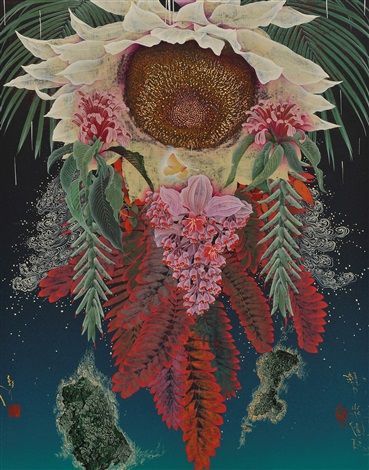
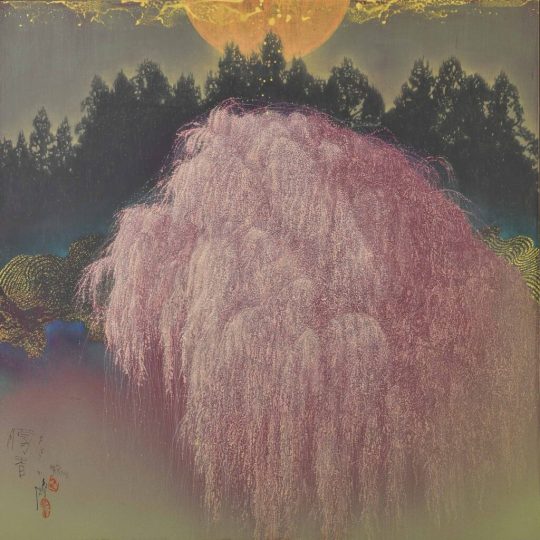
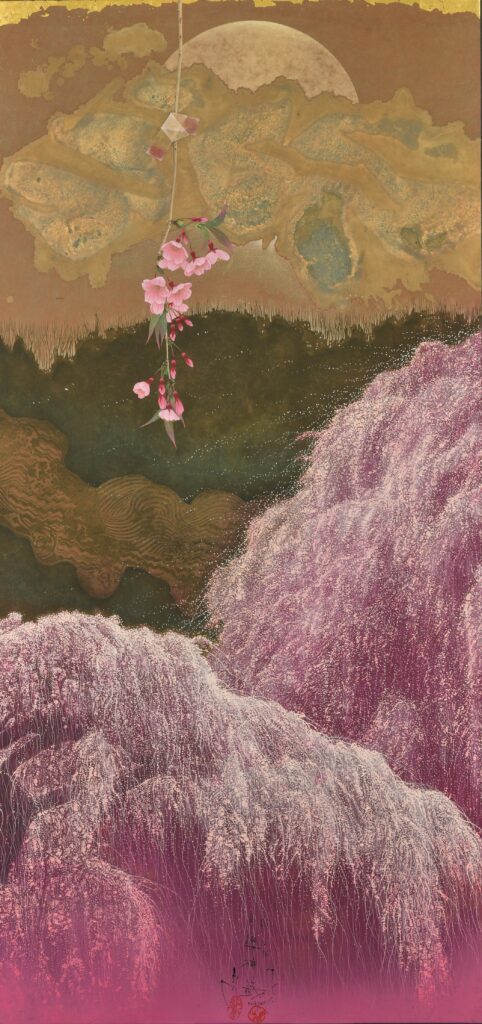
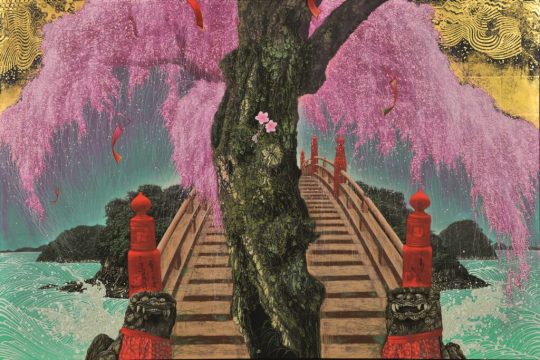
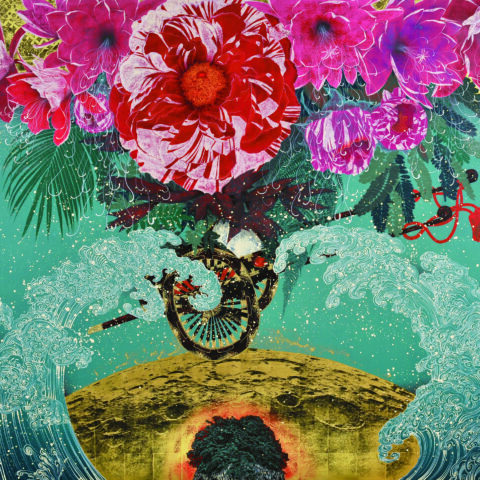
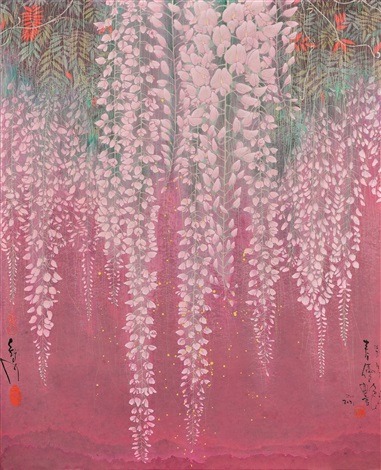
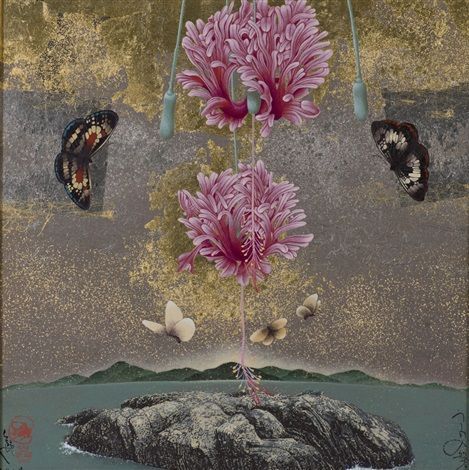
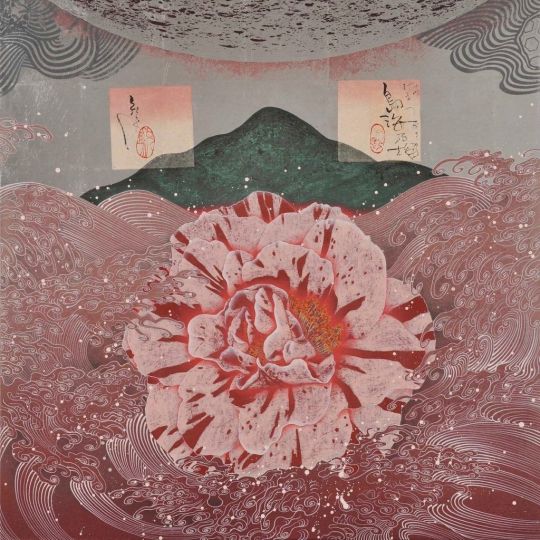

Born in Ehime Prefecture, Japan, 1948, Kyosuke Tchinai graduated from Tokyo University of the Arts with a post-graduate degree.
From the early 1980s, he established an innovative painting style that challenges the conventional notion of the Japanese painting, while also pioneering a unique method of applying acrylic paint onto traditional Japanese paper. Tchinai has also mastered the conventional European image-making technique of using cross-hatching to portray classical Japanese subjects such as the four seasons in fantastical settings. Furthermore, he has helped revive traditional Japanese aesthetics by assimilating elements of art from the Edo period (1603-1868).
For instance, his use of gold and platinum leaves to lavishly decorate his paintings was profoundly influenced by the Rimpa School of the 17th century.
https://www.artsy.net/artist/kyosuke-tchinai
44 notes
·
View notes
Text
Haven't been on fb much, but RIP Ustad Zakir Hussain. The first concert I remember was him and his dad Ustad Alla Rakha at Carnegie Hall, when I was 3 years old. It was snowing outside, and such a classic New York moment.
When we were growing up in the US, and studying European and Indian classical music or dance, the Suzuki Method, Bach, and bharat natyam, there were less than a handful of artists invited from India to those elite stages. Zubin Mehta conducted European music at the Philharmonic Orchestra. Ravi Shankar was famous with the hippies and stoners. Zakir Hussain, and of course, his father - maybe I should reverse the order, since his father came first. It was over the decades that American tastes opened up, the World Music Institute sponsored artists, and our own parents' generation started hosting artists here in the US. Now Lincoln Center has a whole week dedicated to South Asian artists, and Times Square has the biggest Diwali outside of India.
The story started a little bit earlier in the 1950's, when my mom's great-aunt Mrs. Byramjee would invite all the artists and influential people to her house in Nagpur. So it was there that my mom first saw Ustad Alla Rakha play, and Zakir Ji was 9 years old. My mom was 13. They were later invited to his apartment in Mumbai, when some other musicians were visiting. Ustad Alla Rakha later traveled the world with Ravi Shankar, and Zakir Ji grew up back stage at Woodstock, the Monterey Pop Festival, and the night markets of Mumbai, where the street drummers would get the crowd going crazy during festivals. They were rock stars.
In the late 90's, Asian Underground music started, and classical music started crossing over into club nights and electronic music, as our generation started making their own music professionally. I had just graduated from music-heavy Oberlin and moved to the East Village, when I saw an unforgettable concert of Zakir Ji with Tito Puente, the Puerto Rican drummer from Harlem, at Symphony Space. At one point, they made the audience clap along and it sounded like the rain forest. Tito Puente died later that year. Suphala, one of this students, scoured New York clubs playing tabla with alien electronic, or country, collaborations. Rimpa Shiva, another student, came up in India on the more classical side. But some purists would consider Zakir Ji to be the tops, and none of these "youngsters" on his level. They were too rock, or too clubby, or too "what is this?"
One day I was taking the bus from West Orange to Manhattan, a New Jersey commuter bus, and @Talvin Singh got on. They were recording Tabla Beat Science at Bill Laswell's studio on Main Street and Llewellyn Park. What a small world. My sister had taken drum lessons in the studio above where they recorded. Some other friends like Karsh Kale and The Midival Punditz, were also on this album.
A couple of years later, in 2001, I had moved to San Francisco, and my first music documentary was interviewing Zakir ji and the Tabla Beat Science Crew at Stern Grove. It was a sold out show in a park, and people had climbed the trees in true San Francisco hippie style, to watch the concert. I have that interview somewhere. Zakir Ji was actually nicer and friendlier than some of the younger and less established artists. This was summer before 9/11.
We started 3rd I South Asian Films a few months before that. We had a safe space post-9/11 when all the anti-South Asian hate crimes backlash was happening. In September 2003, we hosted the US Premiere of the Speaking Hand, which was Zakir Hussain's biography. I had met the director when he was making ads in Mumbai. There was some internal conflict, as some people in our collective didn't think it was "political" or "activist" enough, and kind of a bougie fundraiser...but I could say that music unites, we sold out, and our fundraiser was successful. It was a conflicted and Islamophobic time of war, and he could talk eloquently about music uniting people on a spiritual and international level. Also his own practice of the classical and ancient tradition - combined different beats as representing different goddesses or different spiritual and religious practices from Ganesh to Sufi saints. As many of the classical musicians are spiritual, and music is a higher power.
We had a live Q&A, and people never hear him talk in person, especially for so long. I also met his wife & manager Antonia Minnecola at this point, who was a dancer.
As the screening wrapped up, the audience of 500 aunties and uncles, went crazy, bum rushed the stage to meet Zakir Ji, as you see the old movies of the Beatles. One of these people was - my Dad! Acting like a teenage girl. So as the organizer, I scolded him under my breath in Marathi, "Why are you acting so crazy? Act cool." Zakir Ji, having grown up in Mumbai, spoke Marathi. So he saw this interaction and started speaking in Marathi and Gujarati to calm people down, "Calm down, what's the big deal?" Still it was funny to see an Indian classical musician get such a maniac fan response in New York. He was truly an icon. From that experience, I also learned to plan for celebrities and security on sets. Later I was asked to do a commercial with Shah Rukh Khan, and I remembered - the fan base that can show up suddenly.
Over the years, we would try to say Hi after the shows. Initially it was pretty informal. Later the venue unions and post-covid made it more strict. They would kick everyone out of Madison Square Garden. He always remembered me, considering how many people he met over the year. I met his daughters. The younger one was starting college. Anisa Angelica Qureshi later turned out to have a lot of mutual friends.
For an Indian from IST (Indian Standard Time), he liked to shame people for being late. Once I came half way through a show, because I had an evening grad school class. I thought I snuck in the back and sat discreetly in a black kurta, in the shadows. But afterwards, he reprimanded me, "You were 34 minutes late! I saw the clock when you walked in." If someone was late to his show and sat in front, he would play slow music until they finally sat down, drawing attention of the whole audience to that late person.
He had a sense of humor, and after a serious, classical show, would play the Pink Panther in the last set.
I started working in India, and caught him playing at the small Prithvi Theater in Juhu, where Bollywood legend Shabana Azmi attended. Another show was a huge, outdoor, public festival at the Asiatic Library Steps. The stage was set up between road closures. Street People were lined up outside the ropes to listen. Here you really felt India, in the ancient music and the crowds of Mumbai, and the smells of the streets, and the colonial library, mixed with something ancient mixed with modern cars and sweat and heat, and the sea breeze. It was really outside an A/C classical music hall in a cold, snowy country. Here you had a performer, who could still capture everyone's attention, with all these distractions of the Mumbai streets. Blue Frog and other venues were opening up in Mumbai. His brother Taufiq Qureshi played with some beatboxers...an idea I had pitched ten years before that.
Many years later, I saw him in Sacramento. DIWAL'OWEEN had won 13 awards, and he was really proud of me. Although I was aware of all the mistakes I had made. He had scored so many films, and I always wanted to collaborate on something...one day, when I had the budget.
I always made an effort to see Masters of Percussion once a year, when he would bring different percussionists from India. At one show at Town Hall, in New York, a mridangam player was 90 years old and had never left Rajasthan before. He shouted during his set, and the lights blacked out. The "show went on," to the next set. We thought it was some experimental, jazz type thing. Later we found out an ambulance had come back stage, and the performer had died on stage, doing what he loved! But that's how pro the Broadway stage managers were - to just move on with it. Another time, at a qawwali show at Town Hall, someone fell off the balcony while dancing ecstatically, and the crowd caught him.
After the lock down year, Masters of Percussion was the first concert I went back to, wearing a mask. He had just won another Grammy, and was touring the remembrance of Shivkumar Sharma.
Thanks for bringing so much joy and music to us, Zakir Hussain.
0 notes
Text
Tapestry Design | Ideation + Research
chrysanthemum
The chrysanthemum, or kiku, is a Japanese symbol that represents longevity and rejuvenation.


The Japanese word kiku translates to "chrysanthemum". The flower's name comes from the Greek words chrysos (gold) and anthos (flower).
The Japanese introduced the chrysanthemum from China in about the 8th century as medicine. They were so fond of the flower that they adopted it as the emperor's crest and official seal. Every year, Japan has a National Chrysanthemum Day, also known as the Festival of Happiness.
The ancient Japanese have also used this flower across many tapestries that they've made and as a result, have also developed their own unique art style connected to Chrysanthemums. This art style on the tapestries was called "The Rimpa School" and it uses gold leaf backgrounds, gold flake clouds, and beautifully draped chrysanthemums. In Chinese culture, they are offered to elders as a symbol of longevity and good luck.


Since Chrysanthemums have a rich history of being a symbol of longevity, I decided to use these flowers as the main visual of the tapestry, and I will also try to incorporate hints of the 'The Rimpa School' style into the tapestry design.
0 notes
Photo




“Coquelicot rouge et Iris“, de
Ogata Kōrin尾形光琳 (1658 - 1716).
Principal représentant de l'école décorative Rinpa-ha 琳派 des XVIIe et XVIIIe siècles.
#ogata korin#painter#painting#print#flower#japan#peintre#estampe#fleur#japon#ukiyoe#rimpa ha#rinpa ha
169 notes
·
View notes
Photo

Waves, Nakamura Hochu, late 1700s-early 1800s, Cleveland Museum of Art: Japanese Art
Nakamura Hochu represents a late, spirited expression of the Rimpa school of decorative painting in Japanese art history. Established at the beginning of the 17th century, it appropriated traditional Heian era (AD 794-1185) motifs and imagery, transforming them into startling designs and formats in architecture, painting, ceramics, and lacquerware. This composition of limpid blue waves can be seen as detailing in religious paintings of the 12th century, then again as the central elements of large screen paintings in the 17th and 18th centuries. Here Hochu employs it on a utilitarian object--a hand-held fan--that has in modern times been remounted as a hanging scroll. Size: Image: 39.8 x 53 cm (15 11/16 x 20 7/8 in.); Overall: 126.4 x 61.3 cm (49 3/4 x 24 1/8 in.) Medium: fan painting mounted as a hanging scroll; ink and color with gold on paper
https://clevelandart.org/art/1999.90
181 notes
·
View notes
Photo

Who told you the world has ever been fair??... She the only one on my chick #to #thebest #glory #God Accussing is allowed someone has to stick on its lane (at RimPa GREEN By Bayley's) https://www.instagram.com/p/COhN3UDjRKX/?igshid=1bjvgbdw3ugsl
1 note
·
View note
Photo

Newly built spacious three bedrooms Bungalow for rent in Ongata Rongai, Rimpa area it is a 3 bedroom bungalow 2 ensuite. its just 600m off the tarmac. Each house has its own gate and compound. It has very spacious rooms. All the bedrooms have wardrobes. Good schools both public and private within. Have the highest standards of finishing. Parking lot for more than 3 cars. Price 40,000 per month. #housetoletkenya #rongaifinest #bungalows (at Ngong Town) https://www.instagram.com/p/ClhKOfVoTPe/?igshid=NGJjMDIxMWI=
0 notes
Photo

Sumie class. Text. 水墨画クラス お手本 最近描いた中で、一番気に入ってるのが こちら。 羽子板に寅の印を描いた、 「正月遊び」シリーズです。 羽根と虎の縞模様に、琳派の水墨画の基礎課題があります。 My most favorite text I made for my student recently. Hagoita(battledore, wooden racket. Traditional sports played on New Year.) has a symbol of the tiger. The feathers, like a badminton feather, and the tiger used the same brush stroke for beginners to learn very basic of Rimpa's painting art to paint. #rimpaart #rimpa #art #hoitsu #sumie #inkpainting #寅歳 #琳派アート #お正月 (Tokyo Japan) https://www.instagram.com/p/CWqXqX_p_Lv/?utm_medium=tumblr
0 notes
Text
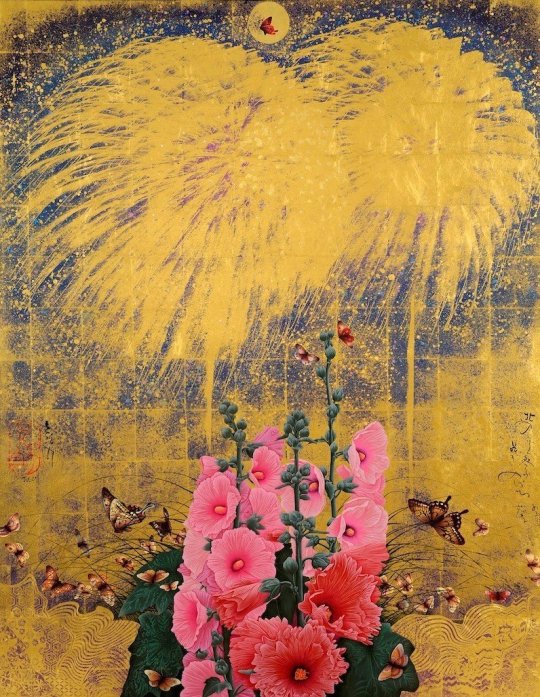
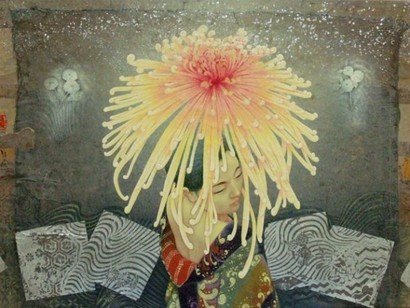
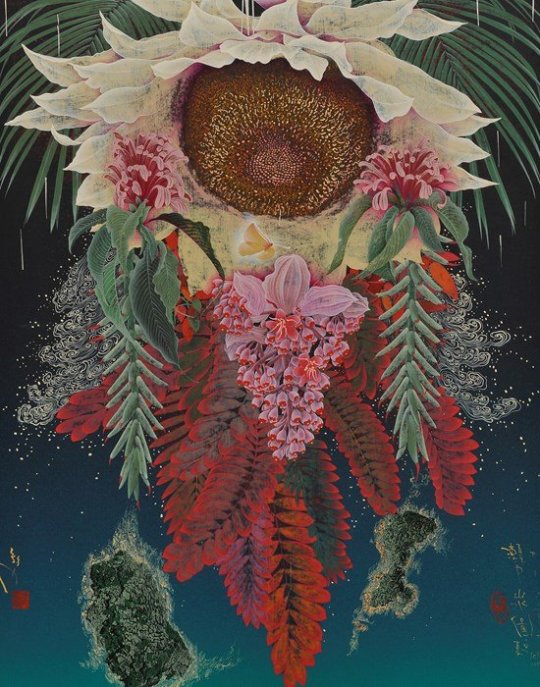

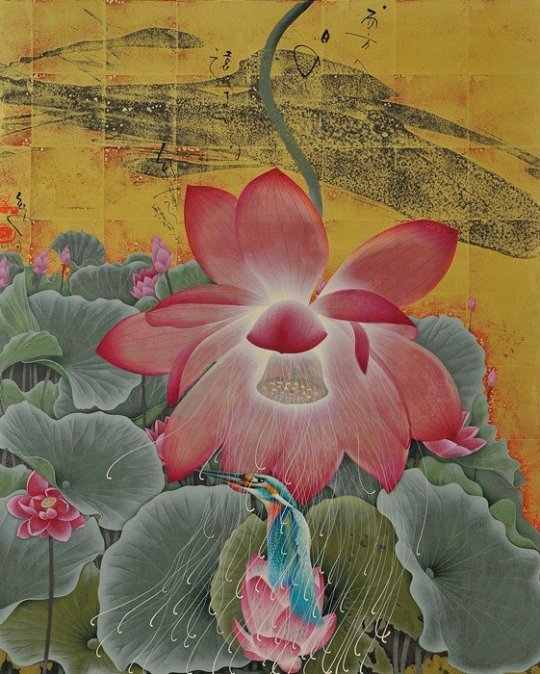
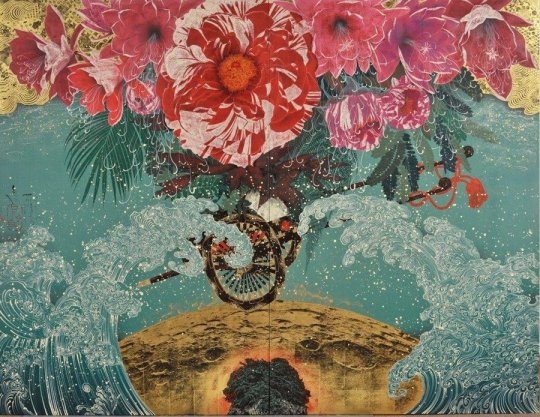
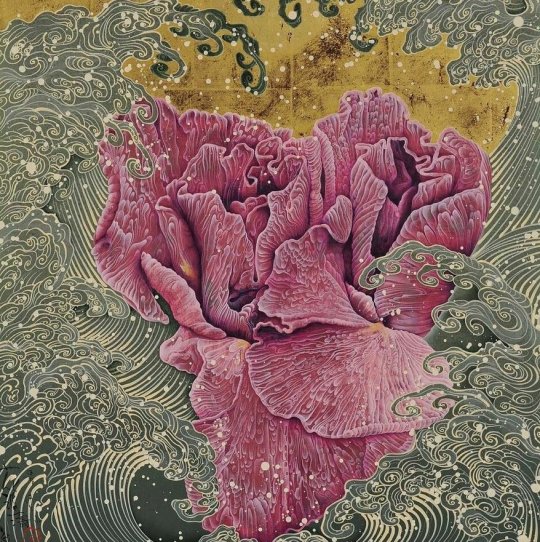
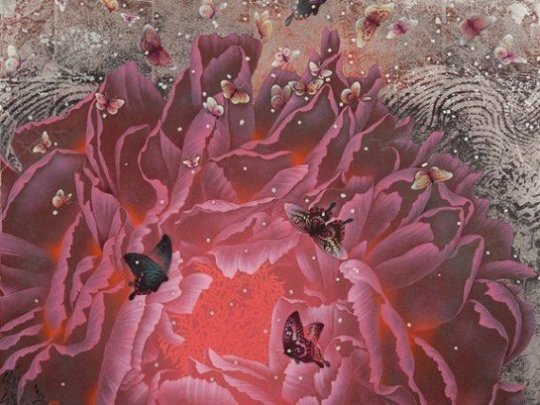

Born in Ehime Prefecture, Japan, 1948, Kyosuke Tchinai graduated from Tokyo University of the Arts.
Since the early 1980s, Tchinai has established an innovative painting style which challenges the conventional notion of the Japanese painting. Tchinai pioneered the method of applying the recently developed Western painting material of acrylic paint onto the traditional Japanese supporting medium washi (Japanese paper). Tchinai also uses the European image-making technique of cross-hatching to portray classical Japanese subjects, such as the four seasons in fantastical settings.
Tchinai revives traditional Japanese aesthetics by assimilating elements of the art from the Edo period (1603-1868) into his artwork. For instance, Tchinai’s use of gold and platinum leaves to lavishly decorate his paintings was influenced by the Rimpa School of the seventeenth century.
28 notes
·
View notes
Text
Late Sangeet Martand Pt Jasraj
Blog Post of March 2014 in memory of Late Sangeet Martand Pt Jasraj
Tushar Buch
Reproducing a blog post of March 2014 as homage to Late Pt Jasraj. I had the priviledge of being in the audience at a programme that the legend had graced:

It was Saturday,15thMarch (2014). Took a quick look at Mumbai Mirror for listings in city and suburbs and was disappointed to see an NCPA announcement for 7 pm show of London Symphony Orchestra (LSO) at Jamshed Bhabha Theatre with bold header “Sorry we are SOLD OUT!” – That’s rubbing salt on wounds !! Hence eyes wandered unwillingly for other listings and one titled ‘The 1stMale Female Duet Festival’ caught my attention. It was a Durga Jasraj –Neeraj Jaitley initiative and the evening promised two duets – a percussion jugalbandi and a vocal duet,titled ‘Jasrangi Jugalbandi’ featuring Ashwini Bhide Deshpande and Sanjeev Abhyankar. The name Ahwini Bhide was enough to make me take the notification seriously and after quick telephone call to the organisors I realized that the event had no entrance fee.My resolve to be there became firm and the ire directed at NCPA for the having sold out the LSO event faded to the background
The event started off a bit late. I thought that the hold up was due to His Excellency the Governor of Maharashtra, despite his red beacon and a pilot, was still unable to beat the traffic jam to the venue which was about 4 kms from his abode on Malabar Hill! Soon it became clear that ‘Bapuji’, as Durga Jasraj kept referring to Sangeet Martand Pt Jasraj, was a bit behind schedule. To keep the audience engaged Talat Aziz ,who was seated next to Pankaj Udaas in the audience went up and in a conversation with Durga (a male-female duet had already begun!) informed us about the project, which had blessings of United Nations Information Centre for India & Bhutan and Bank of Baroda. Talat Aziz impressed me-his tall frame, Urdu and ease with which he quoted from milestone events to emphasize that women are on a equal footing with men in all social walks-by their sheer force of achievements; if not denied an opportunity by unfair social action and inaction!
But soon Panditji and his entourage- ‘Ma’, Baba Goswami (a dhoti clad elder who was evidently being revered by many artists and musicians present), etc lit the ceremonial lamp and before one realized, Durga Jasraj had announced that Rimpa Siva and S Swaminathan would begin the evening’s first presentation. She on tabla-a percussion instrument so popular (and we have an accomplished exponent of the instrument in our batch, too) and yet so closely associated with great exponents, that one waited with bated breath to discover why this young artist has shot to fame as ‘The Princess of Tabla’, ever since the French have made a documentary on her by the same name in 2009. On the other hand one was equally curious to hear what kind of magical sounds would a young man in orthodox Tamil attire, complete with a tilak and choti, would beat up from his percussion disc, the size of a full moon, called ‘kanjira’- (a mini version of a duff). But by word! What an ecstatic performance followed for next 45 minutes. She was strong and subtle at the same time as she began from simple ‘taals’ and went on to play,’gats’,’tukdas’ and ‘bandishes ‘ composed by her father as well as legendry Keramatullah Khan of Farukhabad Gharana. And complementing her music were the now primordial and now exhilarating sounds from Swaminathan’s Kanjira as he dipped into the vast reservoir of Karnatak Music traditional thaats, innovatively blended with beats from Tamil folk music and to my ears, even Afro-Caribbean beats to weave a spell of magic. Truly you have to hear his recordings to believe that such range of sounds and beats could be extracted from a humble looking kanjira!
Niranjan Lele kept the accompaniment on harmonium and displayed enough dexterity to complement at once two artists playing music from two completely different traditions at the same time.
Spellbound as I was, I completely agreed with Durga Jasraj’s opening remarks that we were going to be privileged audience to a young ‘powerhouse’ performance.
***************
His Excellency had arrived. So had some famous Mumbaikars like Shabana Azmi, Dolly Thakore (oh, I never thought I would see her other than at St Andrew’s Bandra at a Rael Padamsee production or at Salt Water Café or Bunglow No 9 type of an eatery in Bandra!), Pt Ratan Mohan Sharma, etc. So to do the honours, some of these dignitaries including Ms Kiran Mehra-Kerpalman, Director, UNIC India were called to the stage and rituals completed with some fuss. Shri Mundra, CMD Bank of Baroda spoke very few, yet erudite words ,quoting from an exchange of couplets between Miyan Tansen and Surdasji, drawing parallel to gender equality. His Excellency in his heavily Mallu accent soon after finishing his officially scripted message went on to add that while both Rimpa and Swaminathan are child prodigies, the day is not far when a just born child would start acting smart, as is currently being shown in some ad on the telly!
The programme was already behind schedule, but who would want to give up the chance to hear Dr Ashwini Bhide Deshpande and Pt. Sanjeev Abhyankar duet?
The title Jasrangi Duet was new to me. Durgaji wants us to believe that Pt. Jasraj was the original activist and promoted gender equality by contributing ‘Jasrangi’ – a musical philosophy to our society, long before page 3 variety socialites began crying hoarse, about recognition of equal status to women in society. The philosophy was simple- to achieve the equality through fusion of ragas encompassing male/female styles, swara, renditions, etc. And before us were an accomplished ‘young ‘master of Jaipur Atrauli Gharana on one side and an even ‘younger ‘master from Mewati Gharana and disciple of the veteran Pt. Jasraj, himself in the audience to bless his disciple, promising a Jasrangi Duet. Could hardly wait on how the rest of the evening would unfold!
And as Abhyankar made brief opening remarks on music the two had in store, what followed was personally an education for me. The Pandita would begin the opening in raag Lalit -a morning raga- from which he would pick the 4th note and adjusting his scale to treat the same as his first note complement the same to produce raag Puriya Dhanashree; an evening raga! As if this seeking of union of two ragas meant for opposite hours of the day was not symbolic enough, the very styles of rendition being from different schools-Atrauli Jaipur and Mewati further added to the symbolism for Durga Jasraj’s venture U & I. And of course the personal factor added by the two accomplished musicians- to quote “Ashwini’s musicianship is characterized by a blend of tonal sweetness coupled with vitality and emotion and raga structure-architecture. Her raga delineation shows an unerring grasp over the grammar of the raga yet maintaining a soulfulness in her singing”. Whereas under the towering presence of his guru, it was but natural that mellifluousness was effusing in Dhanashree rendered by Abhyankar, his tonal quality even close to mimicking his guru’s! However, let me confess. The scales, unevenly balanced in Ashwini’s favour from the start, dipped even more in her favour as the music unfolded, for two reasons- one, she was at her best that evening in evoking notes of the six note lalit and second that Abhyankar at times found to difficult to match the scale set for him from which he had to take off to transform lalit to Dhanashree. To the uninitiated-the closest Bollywood number in lalit is ‘Ek shahenshah ne banwaa ke hasin taj mahal’. And somewhat close to Puriya Dhanashree would ‘yeh, pehele pyaar ki khushboo, tere saanson se jo aa rahi hai…’ But the complementing aspect of nature in union of ‘stree and shakti’ or ‘ardhanareshwar’ seemed to have been accomplished by the musicians.
The ecstatic audience (me included) gave a long, long ovation to the two artists; such was the impact of their Jasrangi jugalbandi experiment!
***************
Incidentally, by some more Google search, I came to know that Dr Ashwini has a full-fledged Ph.D. in Physics under her belt which she got while interning at BARC Mumbai, a career she gave up in pursuit of her musical calling.
No doubt, science has not lost and musical heritage of this country has been further embellished
0 notes
Photo



“Chrysanthème“ de l’album de cent fleurs par des artistes de l’école Rinpa-ha 琳派 ”, 1931
Suzuki Kiitsu 鈴木 其一 (1795 – 1858).
#suzuki kiitsu#painter#painting#print#hundred flowers#japan#peintre#peinture#estampe#cent fleurs#japon#ukiyoe#rimpa ha#rinpa ha
45 notes
·
View notes
Photo

God of Thunder (Raijin), Tawaraya Sōtatsu, mid-1600s, Cleveland Museum of Art: Japanese Art
Such depictions of the God of Thunder originated in Buddhist art. Here, the image was painted on paper covered with gold dust, a technique often found in paintings by Tawaraya Sotatsu or of the Sotatsu school. This gold technique and the "Inen" seal here suggest that the anonymous painter of this screen was probably associated with the Sotatsu workshop. The artist used a prototype borrowed from earlier Japanese narrative painting—rather than mechanically reproducing Sotatsu’s image—and created a bold, innovative image that served the world of play and leisure in early Edo Japan. The theme of "God of Thunder" was often paired with "God of Wind" and has been frequently reinterpreted by generations of Rimpa artists. Unfortunately, the screen God of Wind which would have accompanied this God of Thunder cannot be located. Size: Image: 150.4 x 343 cm (59 3/16 x 135 1/16 in.); Overall: 162.4 x 355.8 cm (63 15/16 x 140 1/16 in.); Panel: 162.4 x 59.2 cm (63 15/16 x 23 5/16 in.); with frame: 165.6 x 358.6 cm (65 3/16 x 141 3/16 in.) Medium: six-panel folding screen, ink, color and gold on paper
https://clevelandart.org/art/2004.86
37 notes
·
View notes
Note
Sorry! I thought that the Miyako Odori's program was the same every year. That scene belongs to the 143rd Miyako Odori.
That helps! The scene is called “四王母三千歳桃” Shiō Haha Sanzen Saitō (please excuse me if I screwed up the pronunciation) which translates to “Four King’s Mother and The Three Thousand Year Peach”. As you already guessed, it’s based on a Chinese tale surrounding the peaches of immortality that belonged to the gods. I’ll have to ask someone who owns the program book what the English description is though ^^ Edit: Scene Three: Western Goddess and the Peaches of ImmortalityOur spring dance describes a glittering Chinese court based on the painting called "Western Goddess" by Ogata Korin, the leading artist of the Rimpa school. Western Goddess is a Chinese goddess who has been depicted as a lady of great beauty by many novelists and painters. She is believed to be able to make an immortal medicine, and an ancient story tells about her immortal peaches. When Emperor Wu, the 'Martial Emperor' (156 BC-87 BC), of the Han Dynasty (206 BC-220 AD) wished for longevity, she gave him seven immortal peaches which ripened only once in 3000 years. The story was well known in ancient Japan, so many Japanese poems were created about it. Enjoy the Western Goddess's elegant dance.
6 notes
·
View notes
Text


January 15th, 2019.
We reached Antia village in Jajpur, Odissa, at around 10 am in the morning. The sun was shinning and there were some clouds floating. This was the first time I visited a village known for their expertise in age old tradition of making beautiful crafts out of golden grass. We arrived at the master craftsman’s house (we call her Mausi) where the artisans have gathered. They greeted us with warm smiles and I got introduced to everyone. First thing I observed was that the crafts are done by women.
Then it was time for a CSR shoot for Jindal Industries (the Golden Grass Project sponsors). The crew interacted with the artisans to get a better understanding of how to portray their story on audio visual. They shot how the artisans were making their crafts. They also captured the intricate details of the golden grass crafts.
Next it was time for the workshop where they were making a very unique non-traditional piece i.e. magic mushrooms using golden grass and cotton. I was fascinated by the way they were sewing the grass by hand using only a needle and effortlessly while chatting and giggling with each other. The raw material is provided by the crafstmaster ‘Mausi’. There were 14 girls that day in which very few of them go to school or college. They were all good at making the products, but some of them were more skilled than the others. Mita Rana, for example, has a niche in the way she weaves the grass. As I chatted with her I could almost feel the effects of the present time, while in the past they used to make the crafts whenever they had free time but now they prefer to spend that time watching television or on mobile phones. I also felt some of them lacked motivation as they couldn’t fathom the importance of reviving this craft for the betterment of their community.
Report by Rimpa Chowdhury
0 notes
Photo

Nihon-ga class 日本画クラス Tiger family. 寅歳のための短冊作品。 Painted on tanzaku long board. For the new year's decoration. 日本画クラスでは、酒井抱一の虎から、日本画による寅の短冊作品を作っています。 短冊の下の方におやの虎、上の方に子どもの虎を配しました。虎は子どもを可愛がって育てる、ある一つ���シンボルともいえるモチーフです。 そして、竹林とも縁が深いのです。竹林に棲むといえば、イメージが強いのはパンダよりも虎でしょう。これは、絵の中の不思議な世界観と言えます。 「皆さんが健やかな1年を、安心して過ごせるように」子どもの虎と竹の子に願いを込めました。 In my Nihon-ga classes, we are learning tiger painting , a parent tiger with a baby tiger. This tiger is from Hoitsu Sakai's. Tiger motif is a symbol of the parenting affectionately. Tiger's deep and strong affection for their children has been depicted. Also, tiger appear in bamboo forest, people believed. Bamboo and tiger are connected stronger than panda, in classic painting world. I attached a baby tiger and baby bamboo shoot for the wishes of hopes and health for the coming new year. #tiger #2022 #日本画 #rimpaart #rimpa #art #hoitsu #bamboo #baby #寅歳 #琳派アート #お正月 #短冊に願いを込めて (Tokyo Japan) https://www.instagram.com/p/CWp1mX5POyb/?utm_medium=tumblr
0 notes
Text
Review Highlight: The stunning "Ikebana Series" – Meet Sandy Bleifer and tour her Japanese Garden designed by Kaz Kitajima TribeLA Magazine • Los Angeles #Tribelamag #Arttoday #Ikebana #Japanesegarden #Sbeifer
New Post has been published on http://tribelamagazine.com/art-today-07-29-17-the-stunning-ikebana-series-that-we-saved-for-the-finale-by-sandy-bleifer-in-her-japanese-garden-by-master-designer-kaz-kitajima/
Review Highlight: The stunning "Ikebana Series" – Meet Sandy Bleifer and tour her Japanese Garden designed by Kaz Kitajima
Ikebana V-A: Rimpa
Thank you Sandy Bleifer, for making us aware of our love and devastations to each other and the planet, through your beautiful art
I have created artistic interpretations of my own Ikebana arrangements and, as I have done in much of my previous work in other subjects, revealed the distress that persistently undermines our aspirations of beauty and serenity. I think of these diptychs as “Memorials” because I have noticed the spontaneous collection of flowers, notes and memorabilia at sites of tragedy – and these roadside arrangements are as much a human response to loss as formal public memorials. (Sandy)
The Japanese Garden, Ikebana and Ikebana Memorials (The video says it all)
The video below documents a joint exhibition in my studio of my Ikebana Series alongside of the art, flower arrangements and landscape design of Kaz Kitajima, noted master of the Sogetsu School of Ikebana. The Japanese Garden presents a heightened sense of nature and Ikebana represents a highly refined representation of the beauty of flowers.
youtube
This post was originally published on July 29, 2017, and has since been updated and highlighted as a “best of” for TribeLA Magazine.
ART TODAY 07.28.17: The “River Rocks Series” by Sandy Bleifer, sharing her art-making methods
ART TODAY 07.27.17: Sandy Bleifer’s “Hiroshima/Nagasaki Memorial project” included a live human performance exhibit, “Passage Into Tomorrow” by the Iona Pear Dance Theatre (Watch this remarkable video on the ‘Essence of the Soul’)
ART TODAY 07.26.17: “Hurricane,” the Devastation series from Environmental Degradation by Sandy Bleifer – watch the video inspired by nature
ART TODAY 07.25.17: Another immense Sandy Bleifer art project titled “Stone’s Stones,” using Music as a Structural Model with Carl Stone’s classical musical composition, “Gallery Environment II” (also watch the Making of Stone’s Stones video)
ART TODAY 07.24.17 Graffiti 35, 1993 by Sandy Bleifer – Collage by Sandy, Graffiti art by Eric Fisher
ART TODAY 07.23.17: “Paper Becoming Me” by Sandy Bleifer – Explore with us this week, the intricate art of this renown artist, her expressive use of paper as a medium and subject, and her favorite food indulgence, a hot fudge Sundae.
#Tribelamag #Arttoday #Ikebana #Japanesegarden #Sbeifer
0 notes